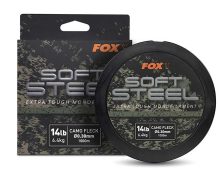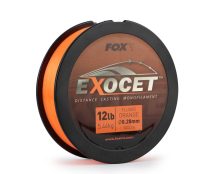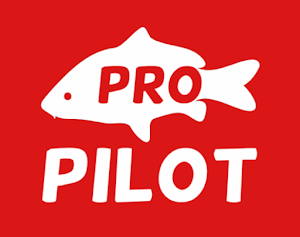Understanding Monofilament, Fluorocarbon, and Braid for Carp Fishing: A Guide Using Fox International Products
Carp fishing is an intricate sport that demands a nuanced understanding of the various types of fishing lines available. The three primary types—monofilament, fluorocarbon, and braid—each have their unique properties and best use cases. In this comprehensive guide, we'll delve into the specifics of each line type, with a focus on products from Fox International, a leading brand in the fishing industry. By the end of this guide, you'll have a clear understanding of which line to use in different carp fishing scenarios to maximize your success.
1. Monofilament Line
What is Monofilament?
Monofilament, often referred to as mono, is a single-strand fishing line made from a blend of polymers. Its popularity stems from its versatility, ease of use, and affordability.
Key Features of Monofilament
- Stretch: Monofilament lines have a significant amount of stretch, which can be advantageous for absorbing the shock of a fighting carp.
- Buoyancy: Mono tends to float or have neutral buoyancy, making it suitable for surface fishing or using it in combination with float rigs.
- Knot Strength: Monofilament knots are generally stronger and easier to tie compared to other line types.
- Abrasion Resistance: It offers decent resistance to abrasion, making it suitable for fishing in areas with moderate cover.
- Visibility: Mono is more visible in water compared to fluorocarbon, which can be a drawback in clear waters.
Best Times to Use Monofilament
- Surface Fishing: When carp are feeding on the surface, the floating properties of monofilament make it the ideal choice.
- Shock Absorption: When fishing for large, powerful carp, the stretch of mono helps absorb sudden shocks, reducing the risk of line breakage.
- Beginner Friendly: For beginners, monofilament is easier to handle, knot, and cast, making it an excellent choice for those new to carp fishing.
Recommended Fox International Monofilament Lines
- Fox Mono: Known for its strength and durability, the Mono is a versatile choice suitable for various fishing conditions.
- Fox Exocet Distance Casting Monofilament: Designed for long-distance casting, this line is perfect for reaching distant hotspots without compromising on strength or reliability.
2. Fluorocarbon Line
What is Fluorocarbon?
Fluorocarbon is a type of fishing line made from a polymer called polyvinylidene fluoride. It is known for its low visibility in water and high abrasion resistance.
Key Features of Fluorocarbon
- Low Visibility: Fluorocarbon is nearly invisible underwater due to its refractive index being close to that of water.
- Density: It is denser than monofilament, which means it sinks faster, making it ideal for bottom fishing.
- Abrasion Resistance: Fluorocarbon lines are highly resistant to abrasion, making them suitable for fishing in areas with heavy cover or sharp objects.
- Sensitivity: The low stretch of fluorocarbon provides excellent sensitivity, allowing anglers to detect subtle bites.
- UV Resistance: Fluorocarbon is resistant to UV light, meaning it does not degrade as quickly as monofilament when exposed to sunlight.
Best Times to Use Fluorocarbon
- Clear Water Conditions: The low visibility of fluorocarbon makes it perfect for clear water where carp are more line-shy.
- Bottom Fishing: Its sinking properties make fluorocarbon ideal for presenting baits on the bottom.
- Heavy Cover: When fishing in areas with rocks, snags, or other abrasive structures, fluorocarbon’s durability is highly advantageous.
- High Sensitivity Needs: For detecting subtle bites or fishing with finesse techniques, the sensitivity of fluorocarbon is unmatched.
Recommended Fox International Fluorocarbon Lines
- Fox Illusion XS Fluorocarbon: Renowned for its invisibility and abrasion resistance, the Illusion XS is perfect for clear water and heavy cover scenarios. You can still buy this from eBay.
- Fox Horizon X4 Fluorocarbon: Combining strength with low visibility, this line is ideal for challenging environments where carp are easily spooked. You can still buy this on eBay.
3. Braid Line
What is Braid?
Braid is a fishing line made from multiple strands of synthetic fibers, woven together to create a strong, thin, and durable line. It is known for its high strength-to-diameter ratio.
Key Features of Braid
- High Strength: Braid offers exceptional strength for its diameter, allowing anglers to use thinner lines without sacrificing strength.
- No Stretch: Unlike monofilament and fluorocarbon, braid has virtually no stretch, providing unmatched sensitivity and immediate hook sets.
- Durability: Braid is highly resistant to wear and tear, making it suitable for heavy cover and tough fishing conditions.
- Floatation: Most braid lines float, which can be advantageous for certain fishing techniques.
- Casting Distance: The thin diameter of braid allows for long-distance casting, making it ideal for reaching far-off spots.
Best Times to Use Braid
- Heavy Cover Fishing: When fishing in dense vegetation, rocks, or other heavy cover, the strength and abrasion resistance of braid are crucial.
- Long-Distance Casting: For scenarios where reaching distant carp hotspots is necessary, the thin and smooth profile of braid aids in achieving longer casts.
- Fishing in Heavy Currents: The thin diameter of braid cuts through water easily, making it ideal for fishing in strong currents or rivers.
- Detecting Subtle Bites: The lack of stretch in braid enhances sensitivity, making it easier to detect even the slightest nibbles.
Recommended Fox International Braid Lines
- FOX SUBMERGE ORANGE SINKING BRAID: This braided line offers exceptional strength and abrasion resistance, perfect for tackling the toughest fishing conditions.
- Fox Exocet MK2 Braid: Designed for long-distance casting, the Exocet MK2 Braid combines strength with a thin diameter to achieve impressive casting performance.
Choosing the Right Line for Different Carp Fishing Scenarios
Scenario 1: Fishing in Clear Water
In clear water, carp are more cautious and easily spooked by visible lines. For such conditions, fluorocarbon is the best choice due to its near-invisibility underwater. The Fox Illusion XS Fluorocarbon would be an excellent option, offering both stealth and durability.
Scenario 2: Surface Fishing
When targeting carp feeding on the surface, monofilament’s floating properties make it the ideal choice. The Fox Exocet Distance Casting Monofilament would provide the necessary buoyancy and casting distance to reach surface-feeding carp effectively.
Scenario 3: Heavy Cover and Snaggy Areas
In environments with heavy cover, such as dense vegetation or rocky structures, braid is the go-to line. Its high strength and abrasion resistance make it perfect for these challenging conditions. The Fox Edges Camo Leadcore is well-suited for handling the toughest obstacles.
Scenario 4: Long-Distance Casting
For situations where you need to reach distant fishing spots, a thin-diameter braid like the Fox Exocet MK2 Braid would be ideal. Its design allows for long, accurate casts while maintaining the strength needed to handle large carp.
Scenario 5: Bottom Fishing
When fishing on the bottom, fluorocarbon’s sinking properties come into play. The Fox Horizon X4 Fluorocarbon would ensure your bait stays on the bottom where carp are feeding, without spooking them with visible line.
Scenario 6: General All-Round Fishing
For general-purpose carp fishing where conditions vary, monofilament offers a good balance of versatility and ease of use. The Fox Mono provides a reliable option for various fishing techniques and environments.
Tips for Maximizing Line Performance
- Regular Inspection: Frequently check your line for nicks, abrasions, or any signs of wear. Replace the line if necessary to avoid breakages during critical moments.
- Proper Knot Tying: Ensure you use the correct knots for the type of line you’re using. Practice tying knots like the Palomar for braid, the Improved Clinch for monofilament, and the Uni Knot for fluorocarbon.
- Spooling Techniques: Properly spool your reel to avoid line twist and ensure smooth casting. For braid, consider using a backing of monofilament to prevent slippage on the spool.
- Line Maintenance: Clean your line after each fishing trip to remove dirt, algae, and other contaminants that can weaken it. Store your spools in a cool, dry place away from direct sunlight to prolong their lifespan.
- Match Line to Gear: Ensure your line matches the specifications of your rod and reel. Using the appropriate line weight and type enhances performance and reduces the risk of damage to your equipment.
Conclusion
Choosing the right fishing line is crucial for successful carp fishing. Understanding the differences between monofilament, fluorocarbon, and braid allows you to select the best line for specific scenarios. Fox International offers a range of high-quality lines that cater to various carp fishing needs. By leveraging the strengths of each line type and matching them to the appropriate fishing conditions, you can enhance your fishing experience and increase your chances of landing that trophy carp.









